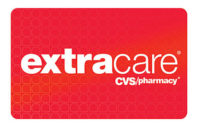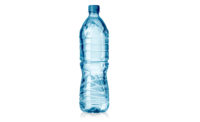Drug stores struggle for growth, beverages outperform channel
Alcohol beverages experience unit sales increases

As consumers’ shopping behaviors continue to evolve, the drug store channel has seen a boon within beverage aisles. Although the channel is struggling to grow, beverages could offer potential for the channel going forward as these stores expand their offerings, says Evan Hoffman, industry research analyst at Los Angeles-based IBISWorld.
Overall, the channel experienced annual growth of 2.7 percent from 2011 to 2016, according to a September 2016 IBISWorld report titled “Pharmacies & Drug Stores in the US.”
Susan Viamari, vice president of Thought Leadership at Chicago-based Information Resources Inc. (IRI), notes that during the past year, the channel has struggled to build momentum.
“Drug stores are struggling against a conservative environment, intense competition and evolving shopping behaviors,” she explains. “As competing channels increase their assortment of health and beauty care products, the competition for share of spending has intensified.
“Beverages have also struggled for momentum, though the category is outperforming the channel as a whole,” she continues. “Non-alcoholic beverages saw units dip 0.8 percent, while alcoholic solutions grew unit sales by 1.1 percent. In both sectors, dollar sales were largely flat.”
Within alcohol beverages, which make up approximately 47 percent of a drug store’s beverage selection, beer/ale/hard cider and wine are among the segments performing well. “Beer/ale/alcoholic cider and wine are both enjoying growth (plus 1.4 percent and 3.5 percent, respectively),” she says. “As two of the largest alcoholic beverage categories, these are important growth drivers and increasing assortment is helping to drive growth.”
When it comes to non-alcohol beverages, which comprise about 53 percent of a drug store’s beverage offerings, Viamari highlights coffee and ready-to-drink (RTD) tea and coffee as gaining segments, with coffee up 4.9 percent and RTD tea and coffee up 5.4 percent. “Both sectors are supported by strong innovation pipelines, elevated at-home behaviors increasing and the fact that consumers are looking for healthier beverage alternatives,” she adds.
In line with current health-and-wellness trends, the channel also has seen better-for-you beverages gain traction, Viamari notes. “Health-and-wellness trends are definitely having an impact on product selection trends,” she says. “… RTD tea and coffee is an example of a healthier beverage solution that is seeing momentum. Bottled juices also are growing strong (plus 6.8 percent).
“We’ve seen momentum in the area of beverages that offer benefits beyond basic thirst quenching, as well as simple ingredients that remove some ‘less desirable’ ingredients/attributes,” she continues.
IBISWorld’s Hoffman adds that bottled water also has experienced positive performance in the drug store channel. “Bottled water continues to perform well within the channel as both carbonated and non-carbonated water continue to be convenient options for consumers,” he says.
He also cites health-and-wellness trends as a driver for non-alcohol beverage performance in the channel.
Digital challenge
Like many other channels, drug stores could be impacted as eCommerce grows. “Typically, the drug store channel is for ‘fill-in’ needs (i.e., to purchase goods that come up sporadically), which has helped protect the channel from other eCommerce models,” Hoffman says. “However, that is not to say that it has not had an effect on the channel as a whole. The convenience of eCommerce models is likely to further cannibalize drug store channel sales ahead.”
IRI’s Viamari also notes its potential impact in the future. Currently, less than 1 percent of food and beverage sales are from the eCommerce channel. She predicts that number will grow to 5.5 percent by 2022.
“While the figure will vary by category, the impact of eCommerce goes well beyond the final moment of purchase. Ecommerce has a profound impact on how consumers learn about and purchase products. More than 76 percent of all shopping trips begin online, regardless of whether the purchase is made in a brick-and-mortar store or online,” she says, citing IRI research.
Nearly two-thirds of millennials report that they shop online on a weekly basis, while 84 percent of consumers aged 35 to 54 years old report shopping online on a monthly basis, Viamari adds, citing research from Clavis Insight.
“Simply stated, eCommerce has a significant impact on awareness,” she says.
Going forward, Viamari notes that beverages are well-positioned for growth in the channel.
“The format itself, which allows for quick in-and-out, is convenient for immediate-consumption purchases, but the channel can also capture fill-in and stock-up purchase with smart promotions and merchandising,” she explains. “One example of a unique opportunity is functional beverages — beverages that support health-and-wellness goals. By cross merchandising/cross promoting, drug stores can capture share of these important and growing sales opportunities (think high-protein drinks, drinks that support heart health or bone health, etc.).”
As for the channel as a whole, the IBISWorld report forecasts annual growth of 5.4 percent for the 2016-2021 timeframe. BI
Looking for a reprint of this article?
From high-res PDFs to custom plaques, order your copy today!







